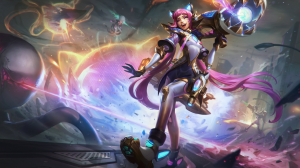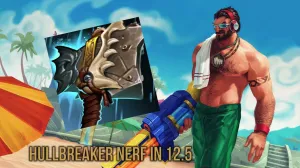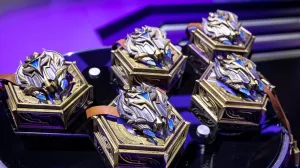A few clarifications have been made to this story since it was published. These include an updated peak player count, a change to the named development studio and added clarification on the parent company who posted the quarterly report.*
One game is paving its way to the top of the most-watched esports in Latin America: Garena Free Fire. The free-to-play, mobile battle royale has hit a peak of more than 100 million daily players, and its explosive global popularity doesn’t seem to be slowing down.
Commonly known as Free Fire, the battle royale is developed by Garena, who released the game in 2017. The game currently features 37 playable characters, one large map and several weapons ranging from projectiles to shotguns. Its rise in popularity is not only due to a large range of in-game characteristics, but also its wide accessibility for everyday players.
“Free Fire was born from the insight that gamers wanted a battle royale game designed specifically for mobile phones,” Harold Teo, Producer of Garena Free Fire, said. “With that in mind, Free Fire was developed with the game and playable on almost all mobile devices. We focus on accessibility and ease-of-play so that our game can be enjoyed on almost any smartphone — from mid-tier handsets to the latest iPhones.”
Growing talent in Latin America
The developers have given international players of all backgrounds a chance to play in tournaments, regardless of their rig. Players rank up in levels, with some eventually taking part in small competitions. According to its most recent quarterly report, Sea, Garena’s parent holding company, showed that an increase in their active user base in Latin America is creating a pool of talented professionals, as well as a growing number of fans.
“In many of the fast-growing markets like Brazil and Mexico, where Free Fire does well, gamers are increasingly leapfrogging PCs and consoles and going straight to mobile as their games platform of choice,” Teo said. “Free Fire was designed with them in mind.”
In 2019, at the inaugural Free Fire World Series in Rio de Janeiro, team Corinthians earned a world champion title. Due to the number of players in South America, teams from all over the region continue to fare strongly in global Free Fire tournaments.
“Free Fire esports events are also something that both players and fans want, and we have delivered,” Teo said. “We continue to see positive reactions for our esports tournaments hosted around the world and here in Latin America.”
At the most recent Free Fire World Series 2021 Singapore, three teams from South America competed in the final. Both teams from Brazil, LOUD and Fluxo, finished in the top four; second and fourth, respectively. Team Aze, from Mexico, finished seventh.

Expanding in Latin America
While the battle royale is gaining traction in South America, Teo said the game’s plans for expansion are far from complete.
“We are building a global community with Free Fire,” he said. “The focus for us now is continuing to enhance the game and build even stronger communities around the world… This means continuing to offer esports tournaments for players to compete against each other to be the best.”
In Brazil, one of the most popular esports competitions, the LBFF split, is currently premiering in June. The LBFF fourth split finals had a peak of over 1.14 million simultaneous viewers. This represents an increase of 94% compared to the LBFF 1 finals audience. For the rest of Latin America, the Free Fire League has achieved more than 1 million simultaneous viewers for two final editions in a row.
Because of the shifts in live events due to COVID-19, official tournaments have yet to take place in person.
“We continue to have in mind different ways to enhance the product, and the audience is eager to witness a presidential tournament,” Teo said. “However, we need to ensure that the conditions are appropriate before hosting an offline tournament in the region.”
While this esport is relatively new and growing, it’s quickly rising in popularity. Teo said he hopes to see the game reach similar heights as other major esports.
“Players are attracted to Free Fire because we have built and are continuing to build strong communities wherever our gamers are at, through grassroots events and engaging local influencers, among other things,” Teo said.








